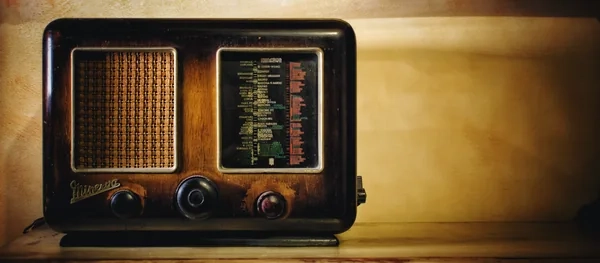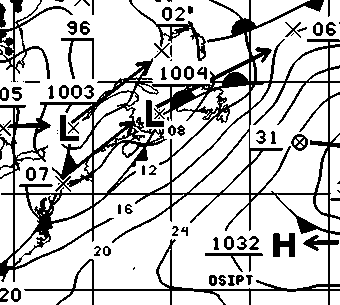A brief history of maritime radio
Do you know how wireless telegraphy and then radio revolutionized maritime navigation?
The invention of radio dates back to 1895-1899. As early as 1902, sailors began using it to transmit weather conditions. This was probably the first use of maritime radio. From the very beginning of this new technology, it was used for shore-to-ship communication, but once certain ships were equipped, messages were also transmitted from ships to shore.
The second major application for seamen was distress calls. After an initially chaotic period, the Berlin Conference (1906) attempted to standardize procedures by proposing the SOS signal. This signal was used by the Titanic in 1912, and its adoption was sealed by the London Convention in 1913.

As early as 1912, it gained a third application at sea: radio direction finding. This involved determining one’s position and/or recalibrating one’s dead reckoning using radio beacons, the electro-magnetic equivalent of lighthouses. Their bearing was measured, as with a bearing compass. However, this method remained fairly inaccurate. Radio navigation therefore progressed significantly in the 1940s and 1950s with the launch of the hyperbolic Decca and LORAN systems.
Finally, radio came to be used at sea to transmit all kinds of information. Just as today our smartphones allow us to make calls or transfer data, we refer to:
- wireless telephony (or radiotelephony) for the transmission of voice,
- wireless telegraphy (or radiotelegraphy) for the transmission of messages, most commonly Morse code
When a transmission is one-way and intended for a large number of receivers, it is referred to as radio broadcasting.
What remains of all this for sailors today?
Satellite navigation
Usage has obviously changed significantly thanks to technology. Satellites, in particular, have profoundly altered the maritime radio landscape. Satellite signals are indeed transmitted over electro-magnetic waves, but the technology is so different that they are often not included in maritime radio communications per se, which take place between stations on the surface rather than in space.
Without a doubt, it is radio navigation that has declined the most over the last decades. GPS(Global Positioning System) Satellite positioning system with worldwide coverage, enabling users to determine not only their latitude and longitude, but also their heading and speed. More and other satellite positioning systems have virtually signed a death warrant for radio beacons and other radio navigation aids. And yet, geopolitical turmoil regularly highlights the usefulness of being able to determine one’s position at sea even without satellites…
VHF radio
For the rest, radio remains a very lively and practical means of communication. It continues to be used to broadcast weather observations and forecasts, to transmit and relay distress calls and other emergencies at sea, and simply to chat or exchange information.
The best known is undoubtedly VHF(Very High Frequency) Radio wave frequency band, between 30 and 300 MHz. By extension, the most widespread marine radio sets, operating on a series of predetermined channels between 156 and 174 MHz, with a range of a few miles to a few dozens of miles. More, a radio that transmits in the band of the same name, around 160 MHz. There are dozens of “channels” on which voice communications can be achieved, including the famous channel 16, the distress and call channel. Some channels are assigned for “data” use, namely channel 70 for digital selective calling on VHF(Very High Frequency) Radio wave frequency band, between 30 and 300 MHz. By extension, the most widespread marine radio sets, operating on a series of predetermined channels between 156 and 174 MHz, with a range of a few miles to a few dozens of miles. More, and channels 87B and 88B for AIS, which allows mariners to receive the position, heading, speed, and name of nearby transmitting vessels. VHF(Very High Frequency) Radio wave frequency band, between 30 and 300 MHz. By extension, the most widespread marine radio sets, operating on a series of predetermined channels between 156 and 174 MHz, with a range of a few miles to a few dozens of miles. More has a range of approximately 10 to 20 miles, depending on the equipment.
SSB: long-distance radio
To communicate over longer distances at sea, the method still used today is SSB. Its name refers to the way the message is “coded” (or “modulated”) rather than the frequency band. Marine SSB radio operates on HF (or shortwave), on frequencies between 2 and 25 MHz. Depending on the wavelength and atmospheric conditions, propagation can reach the other side of the planet!
SSB is used to transmit voice messages and selective calling is available. The distress and call frequency is 2182 kHz. Data can also be transmitted in digital format with a suitable modem, or in analog format using fax technology. The latter allows the transmission of weather faxes, i.e., observation or forecast charts.

Navtex
Only a handful of mainstream radio stations still broadcast weather forecasts in audio format, such as the BBC’s iconic Shipping Forecast. However, there are still a few targeted maritime radio services on certain frequencies, such as Navtex. This system only operates in broadcast and text-only mode. It allows dedicated receivers to automatically receive text messages that can be consulted later. These messages include weather forecasts and urgent notices to mariners. The system has a range of a few hundred miles, but it is not used everywhere in the world: in Australia and New Zealand in particular, the system has no transmitting stations.
Constantly evolving practices
So there you have it: right from the start, radio became an essential tool for sailors. Nowadays, even though its use is constantly evolving, it’s still a big part of maritime life! And a broken radio can quickly become a source of concern, so take good care of it.
